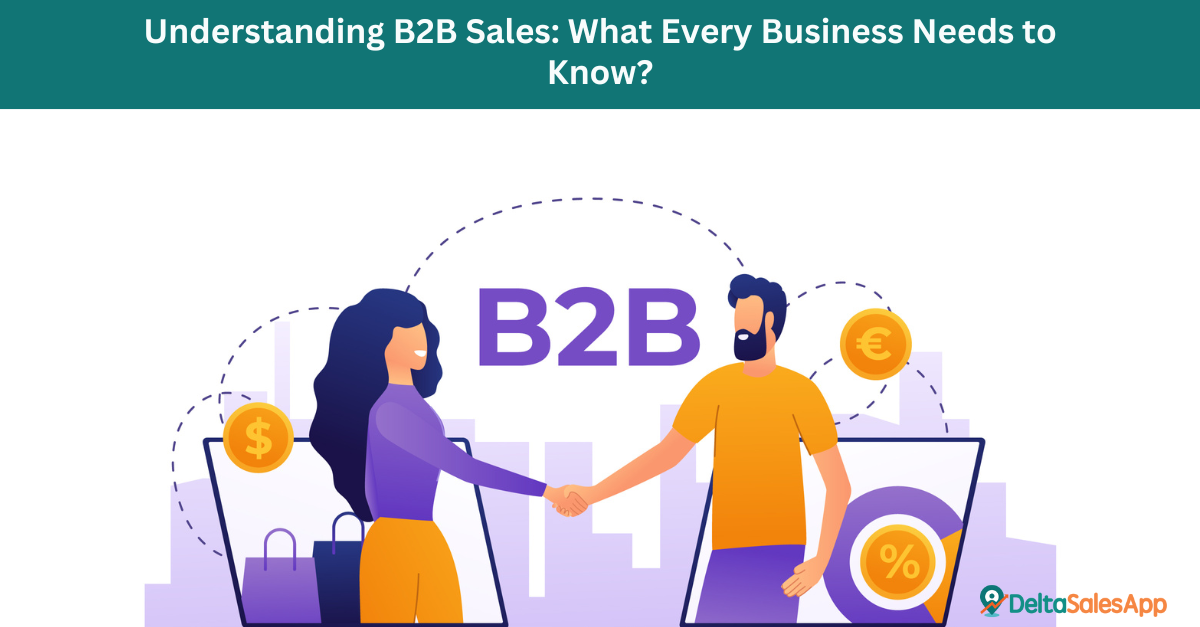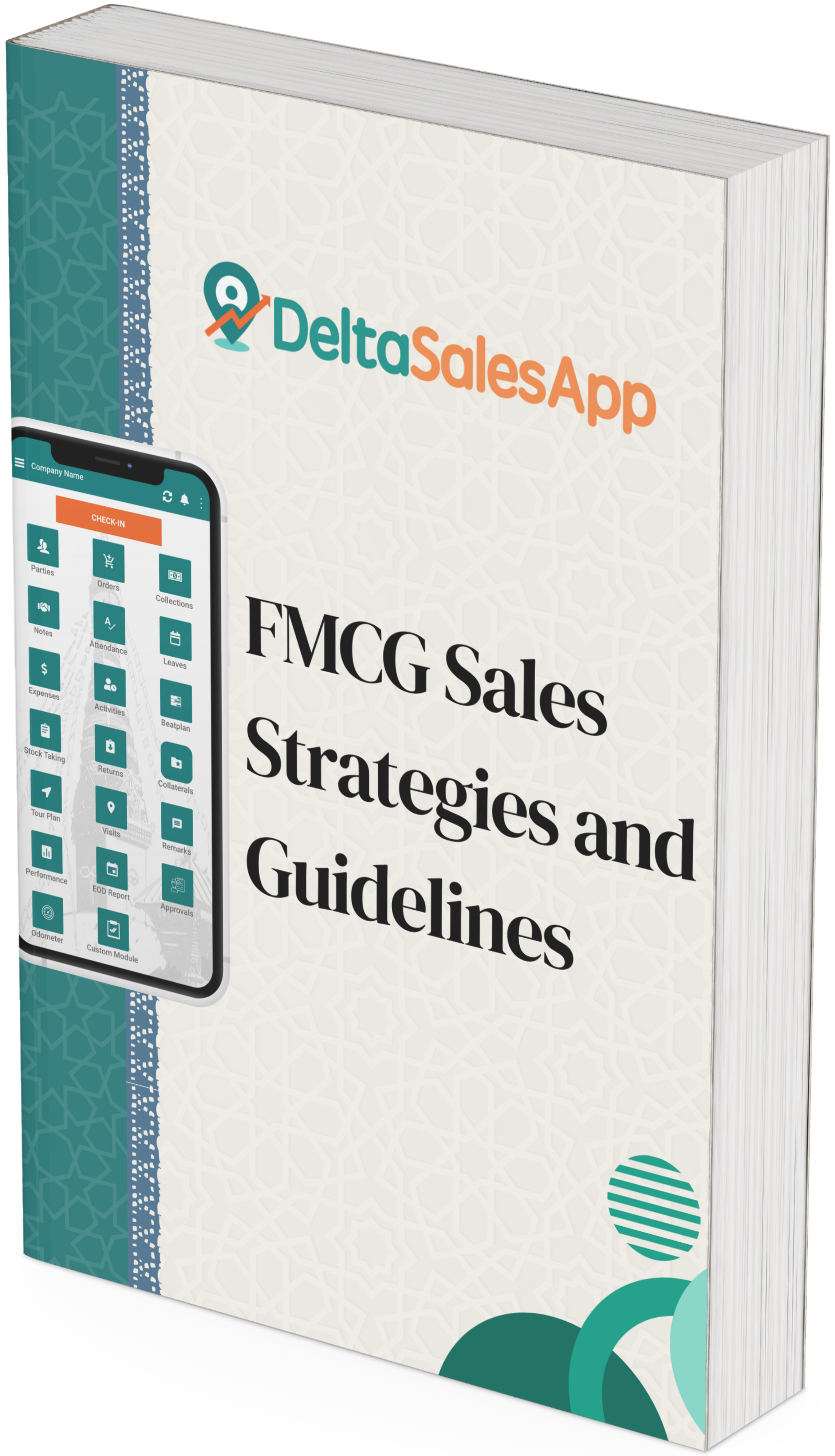Understanding B2B Sales: What Every Business Needs to Know?

Navigating the world of sales can feel like steering through a maze. For businesses, understanding B2B sales is crucial in today’s competitive landscape. But what exactly is B2B sales? It goes beyond just transactions; it involves building lasting partnerships and delivering value to other businesses. Whether you’re a seasoned professional or new to the scene, grasping the nuances of B2B can unlock significant opportunities for growth and success. Let’s dive into this complex yet rewarding area of commerce together!
Understanding B2B Sales: What Every Business Needs to Know
Understanding B2B sales is essential for any business looking to expand its reach. This model focuses on transactions between companies rather than selling directly to consumers. It involves a unique set of strategies and approaches tailored to meet the needs of organizations, enhancing relationships while driving revenue.
Businesses often engage in long sales cycles that require careful planning and execution. Building trust and demonstrating value plays a vital role here. It’s about delivering solutions that address specific challenges faced by other businesses, fostering collaboration over mere transactions.
What is B2B Sales?
B2B sales, or business-to-business sales, involves transactions between companies rather than individual consumers. This process typically encompasses larger orders and longer sales cycles, where businesses offer products or services that help other businesses grow and succeed.
Examples include software providers selling to enterprises or manufacturers supplying goods to retailers. B2B strategies focus on building relationships and understanding client needs deeply. Effective communication is vital in this landscape as it fosters trust and facilitates long-term partnerships essential for sustained growth.
Definition, Examples, Strategies
B2B sales, or business-to-business sales, involves transactions between two businesses rather than individual consumers. This can include selling products like software solutions to a corporation or providing services such as marketing consultancy to another firm.
Strategies for effective B2B sales often focus on relationship building and understanding client needs. Examples of successful approaches include account-based marketing, personalized outreach, and leveraging social proof through case studies. These tactics help create trust and demonstrate value in a competitive marketplace.
How B2B Sales Differs from B2C?
B2B sales and B2C sales operate in distinct environments. In B2B, transactions often involve larger amounts and longer decision-making processes. Businesses usually require extensive research, multiple approvals, and a focus on relationship-building before purchasing.
Conversely, B2C transactions are typically quicker and more emotional. Consumers make decisions based on personal preferences or immediate needs rather than complex evaluations. Understanding these differences is crucial for tailoring strategies that resonate with each audience effectively.
Conducting B2B Sales
Conducting B2B sales involves a series of strategic steps designed to build relationships and drive revenue. It begins with understanding your target market, which is essential for effective outreach. Engaging potential clients through personalized communication can set the stage for fruitful interactions.
Once initial contact is made, it’s crucial to qualify leads based on their needs and budget. This ensures that time is spent on prospects likely to convert. Tailored proposals and demos showcase solutions effectively, creating an opportunity for meaningful dialogue about the client’s specific requirements.
Examples of B2B Sales
B2B sales occur across various industries, showcasing diverse examples. For instance, a software company might sell its project management tools to corporations aiming for enhanced productivity. Another example is a consulting firm providing strategic advice to businesses looking to streamline operations and boost profitability.
Manufacturers often engage in B2B sales by supplying raw materials or components to other businesses. A construction company may purchase steel from a wholesaler for building projects. These transactions highlight the importance of relationships and tailored solutions that drive success in the B2B landscape.
Common Challenges in B2B Sales
B2B sales come with their unique set of challenges. Long sales cycles can hinder momentum, causing frustration for both teams and clients. Decision-making often involves multiple stakeholders, making consensus tough to achieve.
Additionally, maintaining consistent communication is crucial but can be difficult as businesses grow or change focus. Keeping leads engaged requires time and effort that may stretch resources thin. Understanding these obstacles allows companies to adapt strategies effectively and improve their approach to B2B sales.
Measuring B2B Sales Performance
Measuring B2B sales performance is crucial for understanding how well your strategies are working. Key metrics like conversion rates, average deal size, and sales cycle length provide insights into the effectiveness of your team’s efforts.
Additionally, tracking customer acquisition costs and customer lifetime value helps gauge overall profitability. Regularly analyzing these metrics allows businesses to identify areas for improvement and adjust their tactics accordingly. By staying informed about performance trends, companies can foster growth in an ever-evolving marketplace.
Winning Strategies in B2B Sales
Winning in B2B sales requires a blend of strategy and adaptability. Building strong relationships with potential clients is crucial. Understand their pain points and tailor your approach to meet their specific needs. Personalized communication can set you apart from the competition.
Equally important is leveraging data analytics to inform your decisions. Track customer interactions and gather insights that enhance your outreach efforts. Employing automation tools can streamline processes, allowing your team to focus on building connections rather than getting lost in administrative tasks.
Future Outlook of B2B Sales
The future of B2B sales promises to be dynamic and tech-driven. As businesses increasingly embrace digital transformation, tools like AI and machine learning will play crucial roles in streamlining processes. Personalized experiences tailored to individual client needs are set to become the norm.
Additionally, remote work is reshaping how teams engage with clients. Virtual selling techniques will continue evolving, requiring adaptability and innovative strategies. Companies that prioritize data analytics for decision-making will gain a competitive edge in understanding market trends and customer preferences moving forward.
Building Meaningful Connections
Building meaningful connections is crucial in B2B sales. Establishing trust with potential clients can significantly influence their purchasing decisions. Personalizing interactions and showing genuine interest in their needs fosters stronger relationships.
Engagement goes beyond transactions. Regular communication, valuable insights, and a willingness to help create rapport that lasts. Attending industry events or networking on social media platforms also enhances these connections. When businesses feel valued and understood, they are more likely to become loyal partners, paving the way for future opportunities together.
Define Total Addressable Market (TAM)
Total Addressable Market (TAM) refers to the overall revenue opportunity available for a product or service within a specific market. Understanding TAM helps businesses gauge their potential growth and market saturation. It’s essentially the maximum sales potential if you captured 100% of your target audience.
Calculating TAM involves identifying all potential customers and estimating how much they would spend on your offering. This insight enables companies to prioritize strategies and allocate resources effectively, ensuring they focus on high-value opportunities that align with their business goals.
Researching Leads
Researching leads is a crucial step in the B2B sales process. It involves identifying potential customers who fit your target market criteria. Utilize online tools, industry reports, and social media to gather insights about companies that could benefit from your products or services.
Once you've identified prospects, dig deeper into their business needs and challenges. Understanding their pain points allows you to tailor your approach effectively. This groundwork sets the stage for meaningful conversations that can lead to successful engagements down the line.
Prospecting
Prospecting is the art of identifying potential customers. It’s about finding individuals or businesses that might benefit from your product or service. This process involves thorough research to understand their needs and pain points, ensuring a better fit between what you offer and their requirements.
Effective prospecting uses various tools like social media, email outreach, and networking events. Building a targeted list helps in focusing efforts on high-potential leads. The goal is to initiate conversations that can lead to valuable relationships down the line.
Qualification
Qualification is a vital step in the B2B sales process. It involves assessing whether a lead fits your ideal customer profile and has the potential to become a paying client. This can include evaluating their budget, authority, needs, and timeline—often referred to as BANT.
Effective qualification helps prioritize efforts on leads most likely to convert. By asking targeted questions and actively listening, sales professionals can better understand each prospect's pain points and tailor their approach accordingly. A well-qualified lead often translates into smoother negotiations down the line.
Proposal and Demo
Crafting a compelling proposal is crucial in B2B sales. This document should clearly outline the value your product or service brings to the potential client. Tailor it to address their specific needs and challenges, focusing on how you can solve their problems effectively.
A demo complements the proposal by showcasing your solution in action. It allows prospects to visualize its benefits firsthand. Engaging demos create excitement and confidence, driving home why they should choose your offering over competitors’. Make sure every interaction highlights key features that align with their goals for maximum impact.
Objection Handling
Objection handling is a crucial skill in B2B sales. It involves addressing the concerns and hesitations of potential clients effectively. When prospects voice objections, it’s essential to listen actively and empathize with their worries. This builds trust and opens the door for meaningful dialogue.
Responding to objections requires preparation and finesse. You should have clear answers ready that highlight your product's value while aligning with their needs. The goal is not just to counter the objection but to transform it into an opportunity for deeper engagement.
Negotiation
Negotiation is a crucial phase in the B2B sales process. It involves discussing terms, pricing, and conditions that work for both parties. Successful negotiation requires effective communication skills and a deep understanding of your client's needs.
During this stage, it’s essential to maintain flexibility while also protecting your interests. Listen actively to objections and concerns raised by the potential client. This not only fosters trust but can lead to creative solutions that benefit both sides, ultimately paving the way for a successful partnership.
Closing
Closing is a critical phase in the B2B sales process. It’s where you finalize the deal and secure that vital contract. Effective closing requires confidence, clear communication, and an understanding of your client’s needs.
Listening to their concerns can significantly influence this stage. Tailor your approach based on their feedback. A strong close often involves addressing last-minute objections head-on and reinforcing the value your solution provides. Each step taken here lays the groundwork for a successful partnership ahead, setting both parties up for mutual growth.
Implementation and Delivery
Implementation and delivery are crucial stages in the B2B sales process. After closing a deal, it's time to bring your solution to life. This involves coordinating with various teams, such as production or service delivery, to ensure everything aligns with client expectations. Clear communication is key during this phase.
Successful implementation requires tracking milestones and addressing any issues that arise promptly. A smooth transition not only satisfies clients but also sets the stage for future collaborations. Building trust at this stage can significantly enhance long-term relationships between businesses.
Post-sale Support and Relationship Management
Post-sale support and relationship management are vital components of successful B2B sales. Once a deal is closed, the journey doesn't end; it evolves. Providing exceptional support ensures that clients feel valued and heard.
Strong relationships foster loyalty and can lead to repeat business or referrals. Regular check-ins, updates on product usage, and proactive problem-solving demonstrate commitment beyond the sale itself.
Investing in customer success teams helps businesses identify potential issues before they escalate. These efforts not only enhance satisfaction but also contribute to long-term partnerships that drive growth for both parties involved.
Understanding post-sale dynamics is essential in B2B environments where trust and reliability reign supreme.









